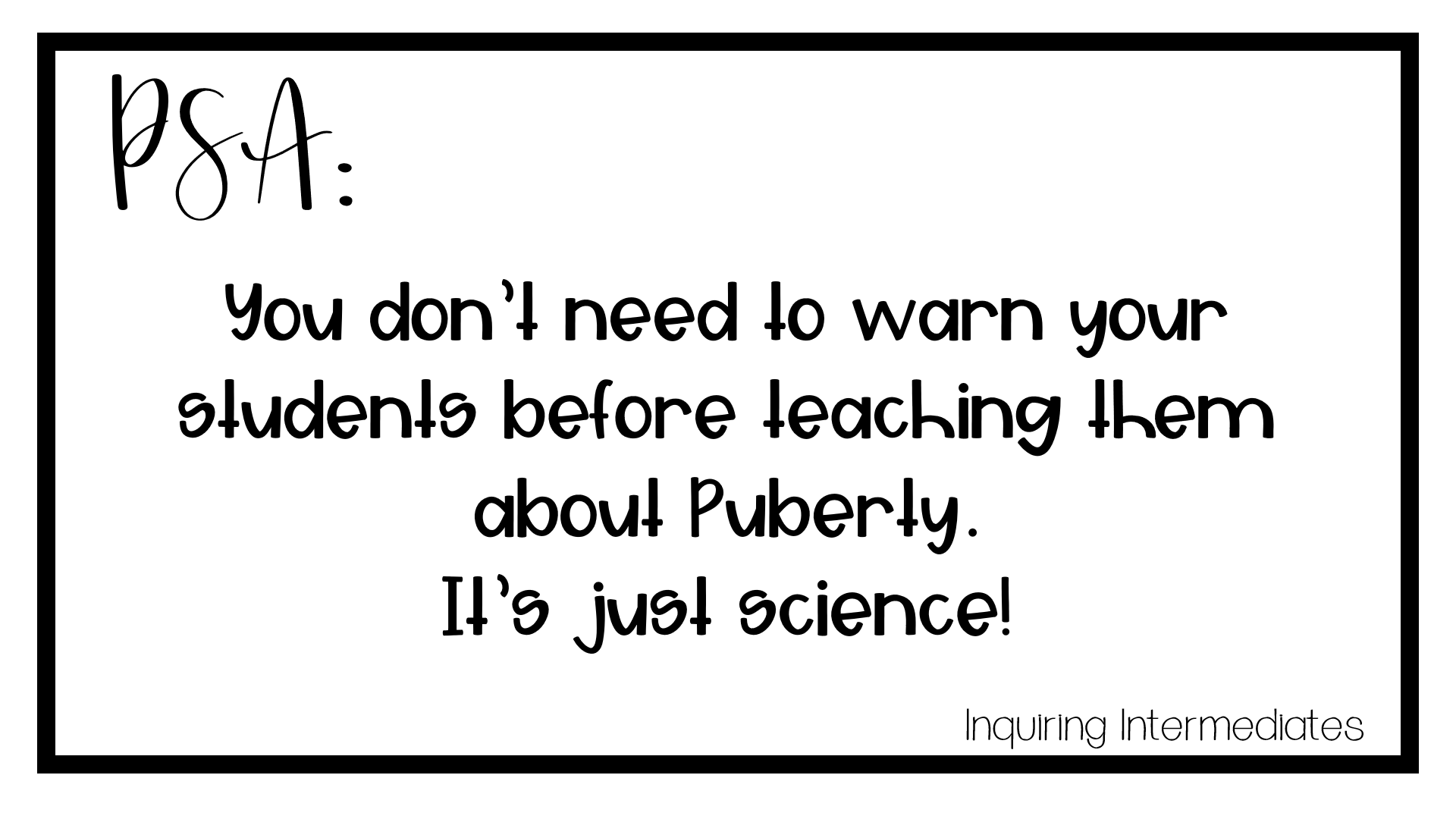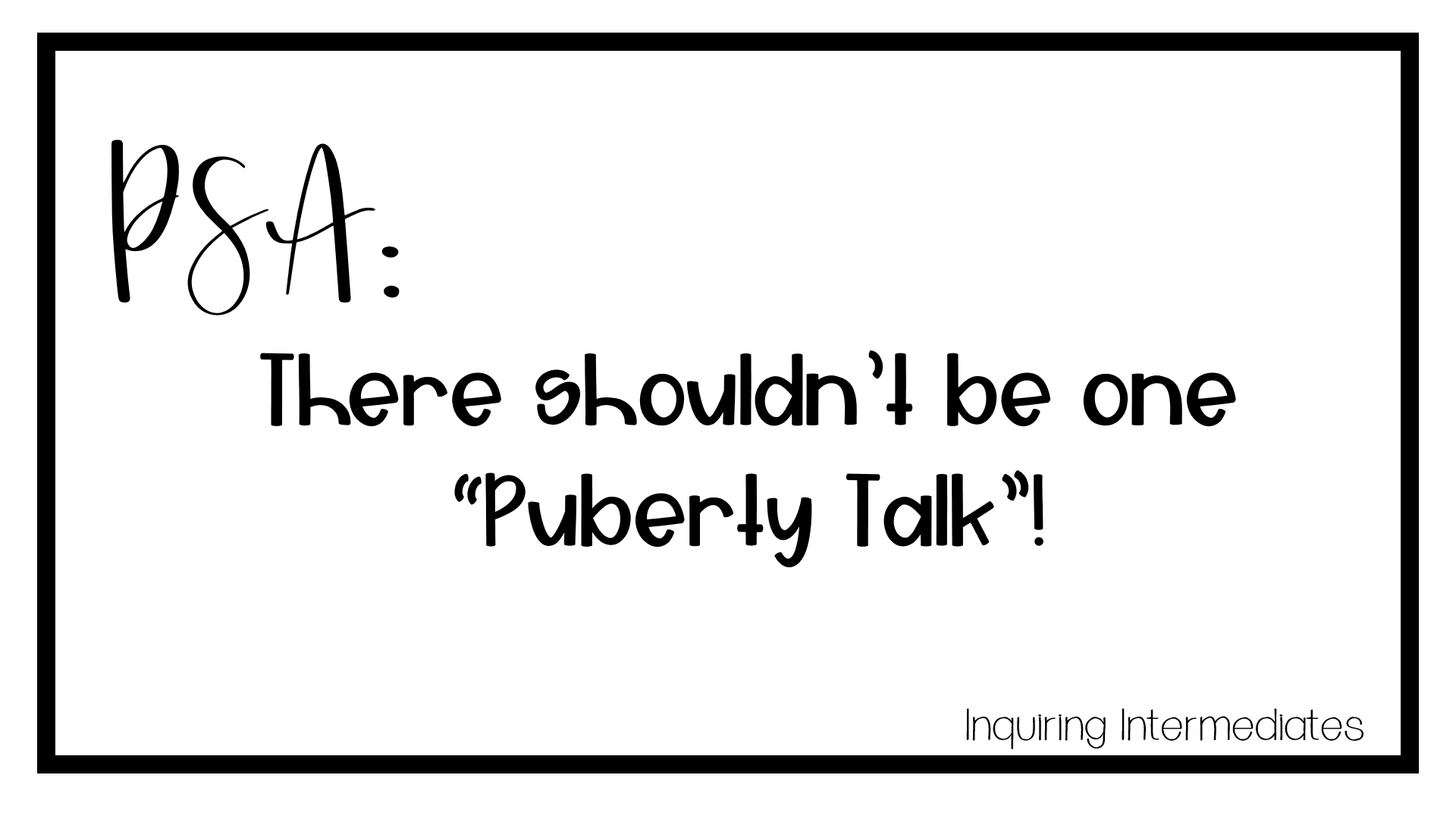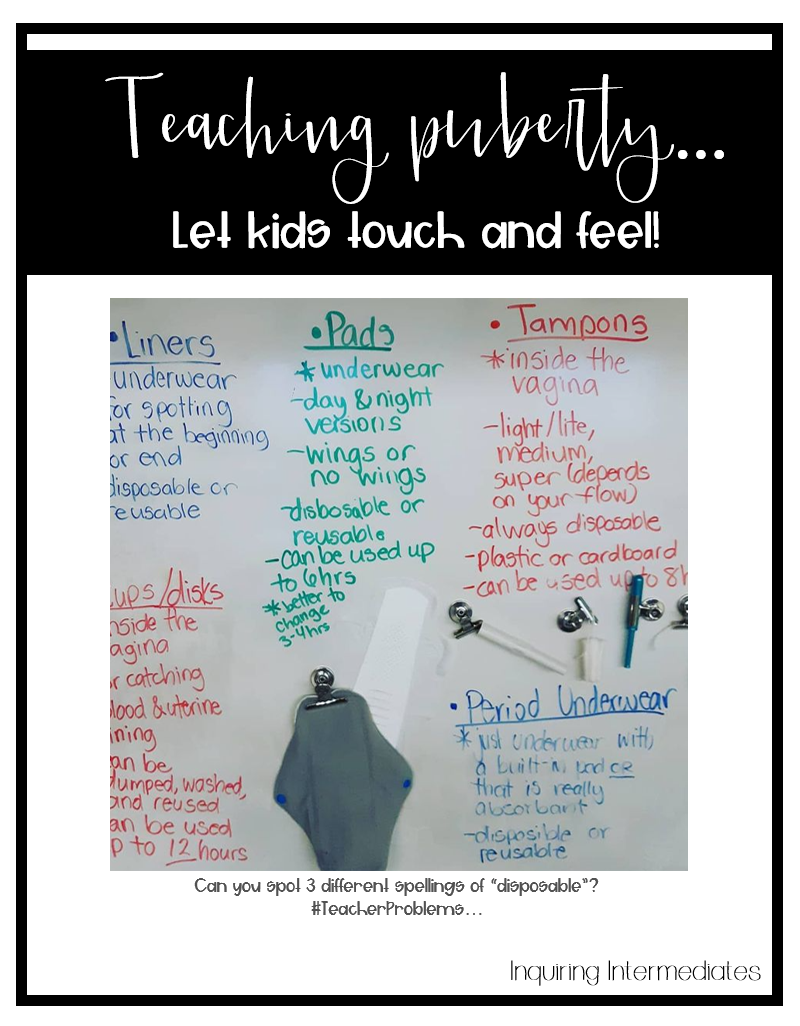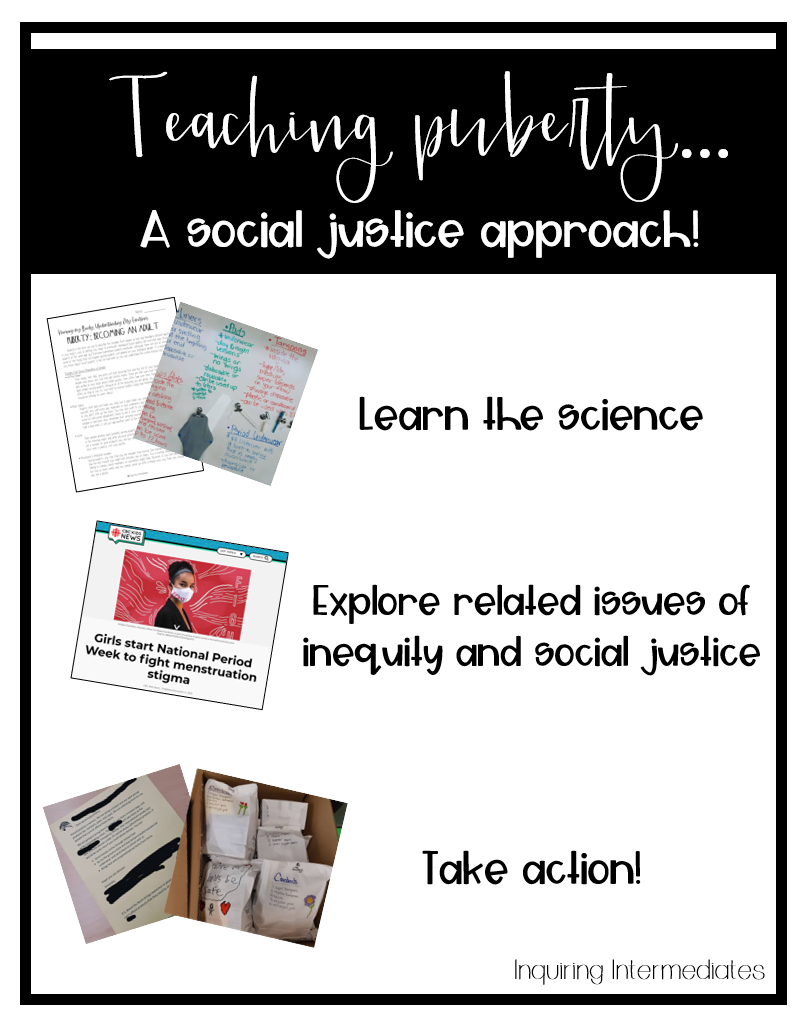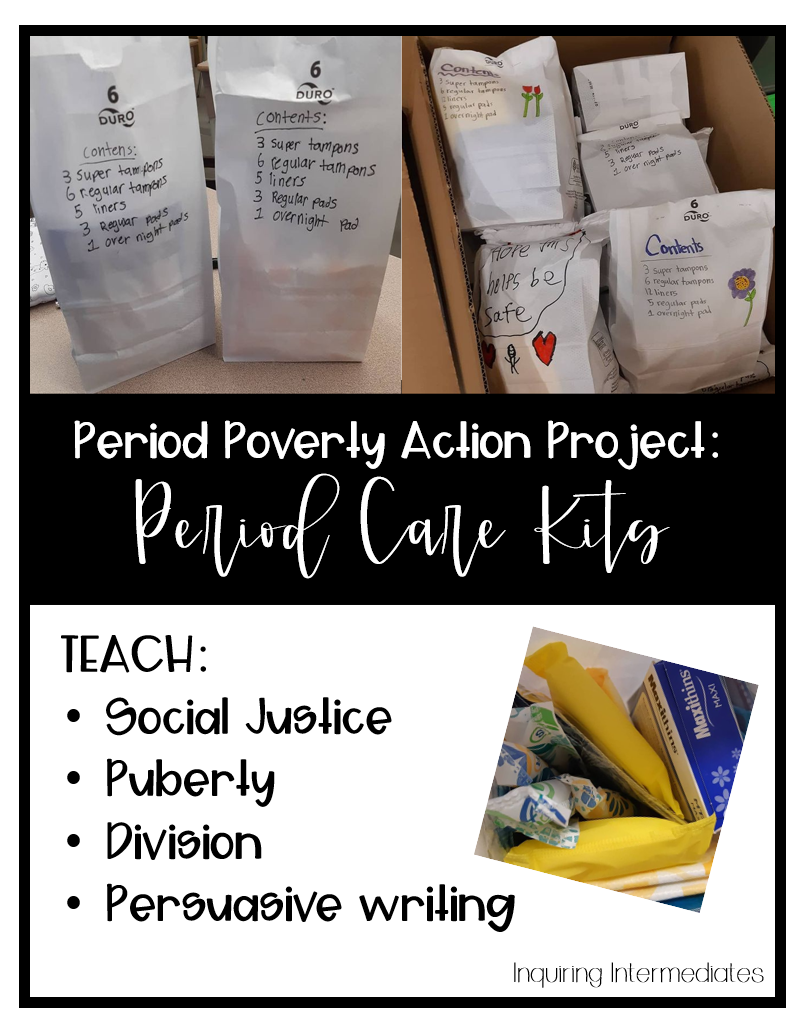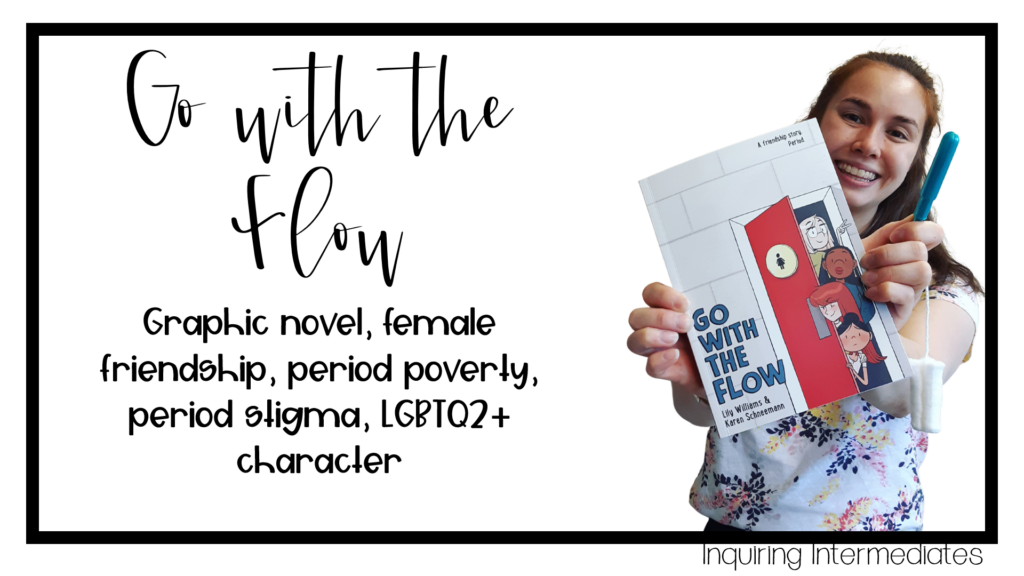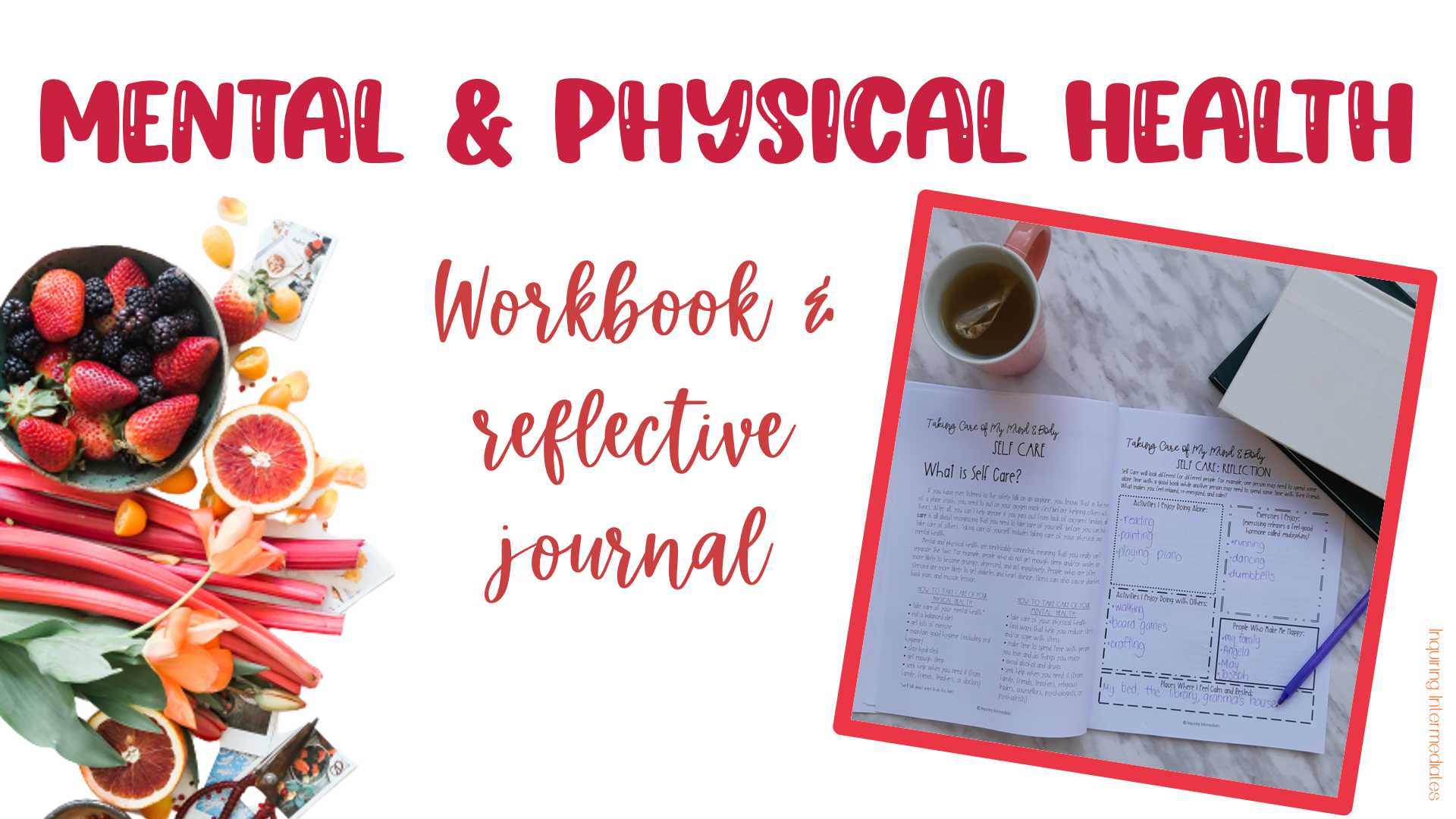A while ago, I talked about teaching my students about puberty, period stigma, and period poverty on Instagram. I got more questions than usual about how I lead the discussions and lessons, so I decided I should probably write a post about it!
The way I see it, puberty education and social justice are connected. We have a duty to use gender-inclusive language. We have a responsibility to make sure that kids don’t grow up thinking that menstruation is ‘gross’ or taboo.
When we don’t use gender-inclusive language, we tell our gender-diverse students that they don’t belong in our classroom. When we are afraid to talk openly and without shame about menstruation, we send the message that it is something to hide and something to be embarrassed about. That makes it hard for people to seek medical attention when they feel something is ‘off’. It also makes it hard for those who don’t menstruate to learn about why accessible menstrual products are so important.
When I teach about puberty, I want all my students to understand that there is nothing to be ashamed of when it comes to how their bodies and their classmates’ bodies work.
Your Puberty Unit Doesn’t Require a Heads-Up
As a kid, I remember being warned that The Puberty Lesson was going to be happening next week. It made me nervous, and it made it sound like puberty was some taboo topic we needed to come emotionally prepared to discuss. One year, I even had to get a permission form signed by my parents. Teaching puberty is teaching science! Would you warn your class before teaching a lesson on the respiratory system? Of course not!
How to Teach Puberty Just Like a Normal Lesson
The first year that I started using my health workbook, I printed the puberty pages separately. I don’t know what I was afraid of… that students would read ahead and learn about their own bodies? Now I print it all together and the written work we do as we learn about puberty is no different from our lessons on proper hydration or self-care.
On the same note, please do not segregate your students by gender! It is so important that we all know how our bodies work and how other people’s bodies work. When we split up students by gender, we tell them that their experiences of puberty are not to be shared with those whose bodies are different. We don’t want to make it awkward for our students to seek help from people of a different gender. It is also important to show our gender-diverse students that they belong. Just keep the kids together like you would for any other lesson!
Teaching puberty should not be a one-day affair. There’s a lot to go over, and we all know hitting a topic once and moving on is not good pedagogy. Also, the more time you spend learning about these topics, the more comfortable your students will be with talking about them.
Let Students Touch and Feel Menstrual Products
The topic that my students always have the most questions about is menstruation. They’re confused about all the products and how periods work. Pass out period products and let kids see what they look like and how they feel. If you’re missing a particular kind of product, show videos about it. At first, I only brought in pads and tampons because I wasn’t going to shell out money for a pair of period underwear or a menstrual cup just to pass around in class. Later, I did find a cup on sale and brought that to school.
When you’re done passing out the items, pin them up somewhere so the students can look at them for a while. I usually use magnetic clips to put mine on the whiteboard for a few days (or, let’s be honest, weeks). This lets kids who weren’t quite comfortable enough to explore them properly the first time around have another chance.
Bring in the Experts!
Remember those awful Kotex videos we watched in health class as kids? Ditch ‘em. There are so many great videos online where real people review or talk about their experiences with menstrual products. Find some that your students can relate to. This year, I was lucky enough to connect with Bleed the North, a group of young women in Ontario who are working to fight period stigma and period poverty. They offered to video chat with my students, and the kids listened to them and barraged them with questions for over an hour. This was such a neat way to normalize talking about periods and connect my class with a group of fantastic young activists!
Integrate Social Justice and Action Projects
Part of the reason that teaching puberty can feel so awkward is that we are not used to talking about, as my students put it “our private parts”. There is nothing dirty or bad about our bodies, and there is nothing bad about talking about how they change.
- Challenge students to question why talking about these topics makes us so uncomfortable.
- Get them to ask their adults about how they learned about puberty.
- Teach them about period poverty and how it arises because of period stigma and sexism.
- Show them what your governments look like and challenge them to question why products like toilet paper are available freely in all public bathrooms while period products are not.
This year, I showed my students Bleed the North’s Instagram page and they learned that 1/3 women in Canada cannot always afford period products. At first, they didn’t believe it, so we had to put our fact-checking skills to work. We worked as a class to ‘do something’ about this problem. They ended up packing over 45 period kits for a local emergency shelter! We collectively wrote the letter that went home asking for period products, did the math to divide the items, then decorated and packed the bags! They were so proud to see how many kits we were able to make. Check out my Puberty and Periods highlight on Instagram for more information.
Use Gender-Inclusive Language for Teaching Puberty
Remember that females aren’t the only ones with uteruses. Using words like “menstruation” or phrases like “people with testicles and penises” is more inclusive. Plus, it makes the words themselves less taboo. Yes, students will giggle at first. But eventually, they will get over it. If you’re looking for texts and worksheets about puberty that use gender-inclusive language, I have a set included in my year-long health workbook and also have just the puberty pages available here.
Everyone is Different, but Not Everything is “Normal”.
When talking about puberty, it is important to stress that there is no perfect way for a person’s body to change. At the same time, some things aren’t healthy, and students should be made aware of that. For example, although a person might get bad period cramps, they should go to a doctor if their cramps are interfering with their quality of life. They may have endometriosis or polycystic ovarian syndrome. Because we don’t talk about these medical issues enough, people often suffer in silence far too long before getting help.
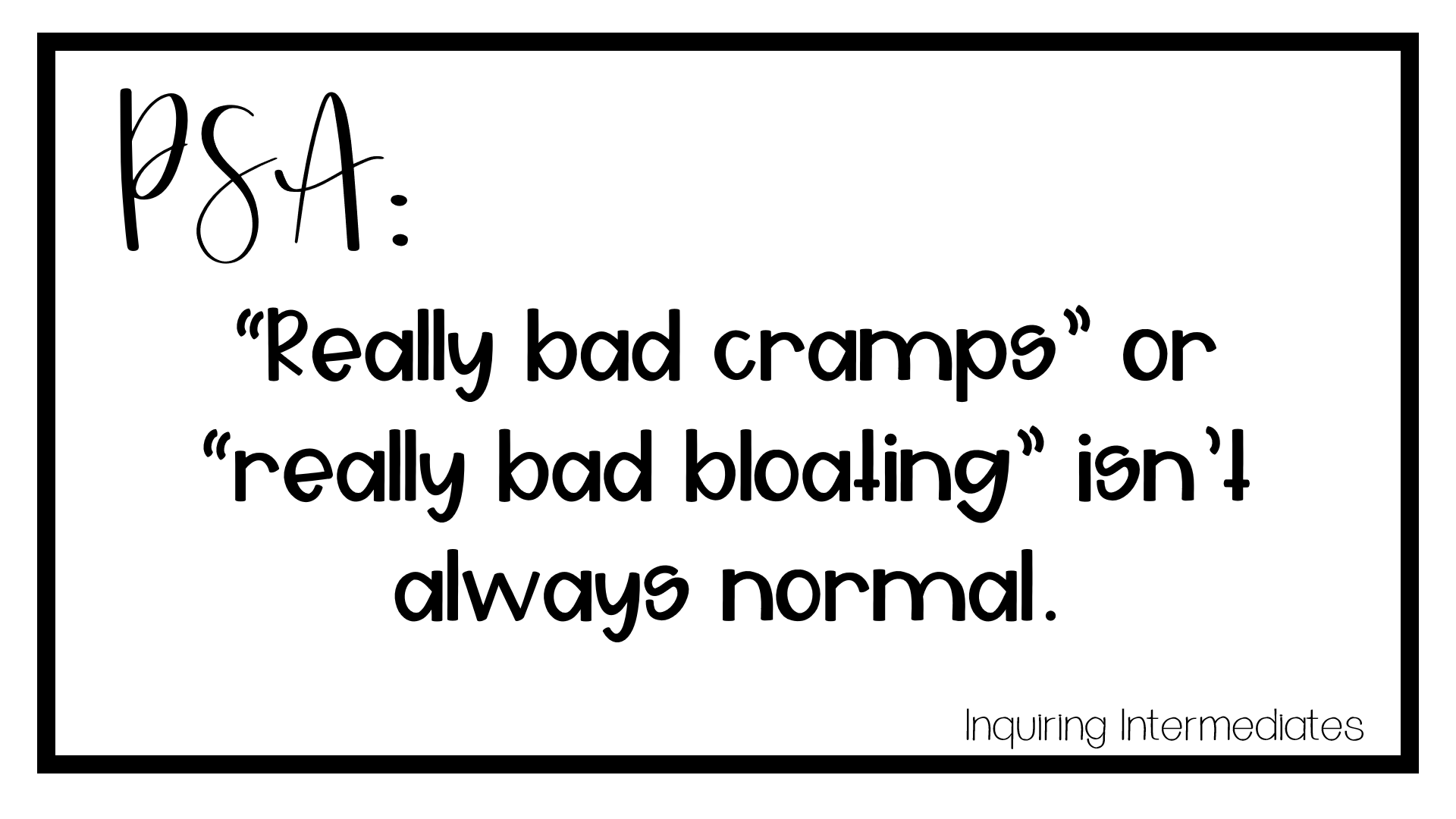
Share Your Stories!
One of my favourite memories from school as a kid was when my third-grade teacher would tell stories about his childhood. I know some teachers feel like their students don’t need to know anything about their personal life, and I respect that. But I tell my students stories from my life all the time!
When we talk about menstruation, I always tell them not to be afraid to ask for a period product at school if they need one. I tell them about my first day working in the school district. I got my period early and was horrified to realize that I hadn’t put any pads or tampons in my new ‘work bag’. To top it all off, I hadn’t put my emergency kit back in the trunk after vacuuming the car. I had nothing! I had to ask at the office for a tampon or pad as I checked in. It was not the introduction I’d hoped for, but I survived! I feel like the more willing we are to share our stories, the less intimidating it becomes if students need to share theirs with us.
P.S. Here’s a graphic novel about periods!
Click the image below to read my review!
How do you feel about talking about puberty? Does it make you squeamish, or do you jump straight in? Share your thoughts, tips, and tricks in the comments below!
RELATED RESOURCE:
Note: A gender-inclusive version of the puberty section of this book has been added! If you already own it, be sure to re-download it. If you want just that section, you can grab it here.

